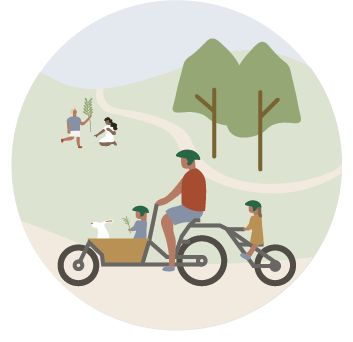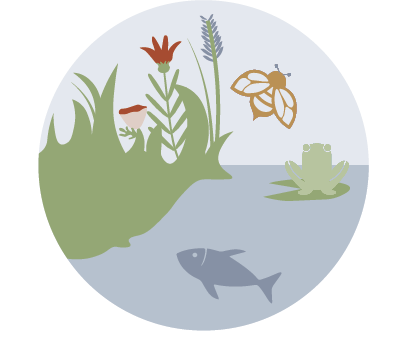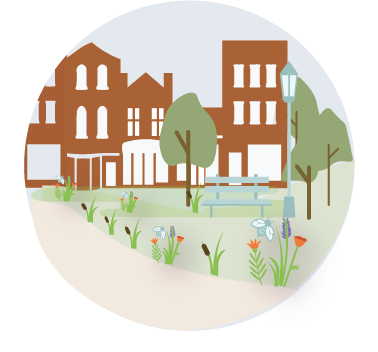Vision and objectives
The Vision
Carmarthenshire’s GBI Strategy will be guided by the following overarching Vision, which was drafted in line with feedback from key stakeholders (see Appendix A).
“Carmarthenshire’s green and blue infrastructure network will be planned for strategically. This will ensure a coherent and well-connected series of natural assets which work with natural processes. The network will lie at the heart of efforts to combat the biodiversity and climate crises.
Responsibility for Carmarthenshire’s green and blue infrastructure network will be distributed across all Council departments, in close collaboration with a range of external partners including local communities. This will allow for the design and management of each GBI asset to go beyond the ornamental and decorative, and provide functions for People, Nature and Place – rooted in the County’s distinctive local strengths.”
This Vision will be supported by a series of 13 strategic objectives. These were informed by the key issues identified for each of our themes.
They will help to deliver the network and will form the basis for monitoring its success. Monitoring against them should take place on a regular basis.
Future iterations of this Strategy will need to capture a rapidly shifting policy agenda. This is likely to include evolving legislation on tree cover, net zero requirements and nature recovery policy, as well as new sources of funding.
Importantly, the objectives cannot be achieved by one Council department alone or through planning policy alone. Their achievement will depend on distributed leadership across a wide range of Council departments and external partners through a collaborative GBI-led process.
This will include transport planning, green space management and regeneration initiatives, to name just a few.

“People” objectives for 2033
P1: Everyone in Carmarthenshire, of all ages and income levels, will be able to access areas of natural green space on their doorstep without needing to use a car.
P2: Green routes and improved walkability will contribute to a significant increase in journeys made by walking and cycling into and within each town. This will lead to a transformation in local air quality.
P3: Delivery of play space will both meet (or exceed) quantitative targets, but will prioritise multifunctional spaces that allow natural, imaginative play for all ages.
P4: Sustainable and community-based food growing opportunities will be actively supported in each town.

“Nature” objectives for 2033
N1: Thriving and coherent ecological networks will be protected, enhanced and expanded to deliver net gains for biodiversity and to boost resilience to the inevitable impacts of climate change.
N2: The biodiversity functions of existing and new green spaces will be maximised through changes in management practices.
N3: GBI will be used proactively to deliver an improved water environment by working with natural processes to help reduce flood risk, manage drought and improve water quality.
N4: Nature-based solutions will be prioritised to build resilience against the impacts of climate change, including the use of GBI to attenuate flood water and absorb carbon.

"Place” objectives for 2033
PL1: Enhanced multifunctional urban greening will create attractive environments with a distinctive sense of place close to areas where people live, work and visit.
PL2: Urban tree cover will reach 20% across Carmarthenshire.
PL3: Town centre improvements will focus on reconnecting to their natural setting – bringing river corridors back to life and supporting nature-based tourism.
PL4: Opportunities to progressively ‘depave’ areas of hard surfacing will be actively promoted in each town.
PL5: High quality GBI will be provided within all new development. It will both improve the local sense of place and protect and enhance nature, heritage and cultural assets.
